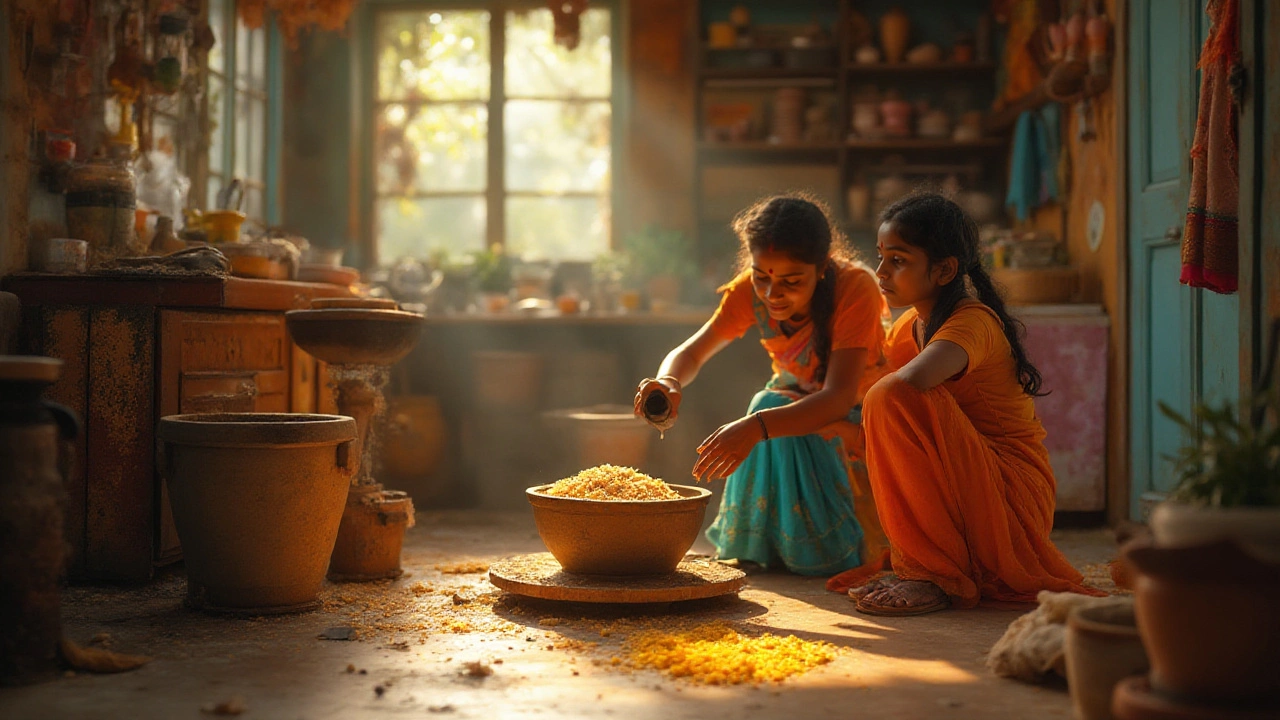Soak Urad Dal Overnight: Why It Matters and How to Do It Right
When you soak urad dal overnight, you immerse whole black gram in water for 8‑12 hours before grinding or cooking. Also called overnight urad dal soak, this simple step boosts digestibility, cuts cooking time, and creates a smoother texture for dishes like idli and dosa. The practice is a staple in South Indian kitchens and is backed by food science that shows prolonged hydration softens the seed coat and activates enzymes.
Understanding the related pieces helps you get the most out of the soak. Urad dal is a protein‑rich pulse known as black gram and forms the base of many breakfast batters. Dosa batter relies on properly softened urad dal for fermentation and crispness benefits directly from the overnight soak. Fermentation is the natural leavening process that turns batter airy and tangy works best when the dal’s surface is fully hydrated, allowing friendly microbes to thrive. Besides these, two other entities matter: the water‑to‑dal ratio and the sprouting potential that appears if you leave the soaked beans a bit longer.
Step‑by‑Step Guide to Soak Urad Dal Perfectly
First, measure the dal. A common home use is 1 cup of whole urad dal, which will yield about 2‑3 cups after soaking. Add enough water to cover the beans by at least 2 inches; a 3‑to‑1 water‑to‑dal ratio works well for overnight soaking. Rinse the dal once, then place it in a bowl or jar. If you live in a warm climate, keep the container in the refrigerator to prevent unwanted bacterial growth.
Let the dal sit undisturbed for 8‑12 hours. You’ll notice the grains swell and the surface becomes slightly frothy – a sign that the beans are absorbing water. Some cooks add a pinch of salt or a few drops of lemon juice to the water; this can enhance the softening effect, but it’s optional. Once the time’s up, drain the water and give the dal a quick rinse. If you plan to make a batter, grind the dal with fresh water until you reach a smooth, slightly airy consistency.
For those who want extra nutrition, keep the drained dal in the same water for another 4‑6 hours to let it sprout. Sprouted urad dal contains more vitamins and a lower glycemic index, making it a great addition to health‑focused meals. After sprouting, you can either cook the beans directly or blend them into a batter for an even richer texture.
Cooking the soaked dal is a breeze. On the stovetop, bring 3 cups of water for every cup of soaked dal, bring to a boil, then simmer for 15‑20 minutes until tender. In a pressure cooker, the same amount of water and a 5‑minute high‑pressure cycle will do the job. The key semantic triple here is: Soaking urad dal overnight enables faster cooking and improves digestibility. Another triple: Proper water ratio supports effective fermentation of dosa batter. And finally, sprouted urad dal adds extra nutrients to any dish.
Beyond the kitchen, the practice has cultural roots. Many Indian families teach children to soak the dal the night before a big feast, ensuring the batter is ready early in the morning. This tradition ties the act of soaking to celebration and community. Whether you’re making idli for a weekend brunch or preparing dal for a weekday dinner, the overnight soak saves you time and upgrades flavor.
Now that you know the why and how, you’ll find the posts below cover everything from soda tricks for dosa batter to health insights about pulses, detailed cooking times for different dal varieties, and tips for perfect roti puffing. Dive in to see how each piece fits into the bigger picture of Indian cooking, and use the knowledge to create flawless dishes every time.

Soaking Urad Dal Overnight for Perfect Dosa: Tips, Myths, and Science
Wondering if you should soak urad dal overnight for dosa batter? Dive into methods, myths, pro tips, and get consistent results for crispy, tasty dosas every time.
- Chutney Recipes (13)
- Healthy Living (12)
- General (11)
- Easy Indian Recipes (9)
- Chicken Curry Recipes (9)
- Paneer Recipes (8)
- Healthy Indian Snacks (8)
- Dal Recipes (7)
- Street Food (7)
- Dosa Recipes (7)
-
Biryani and Your Body: What Really Happens After That Feast
4 Jun 2025 -
How Long Does Dal Take to Cook? Times, Water Ratios, and Methods
22 Sep 2025 -
The Most Consumed Food in India: Spotlight on Rice
12 Feb 2025 -
Avoid Delhi Belly: Staying Safe from Stomach Troubles in India
28 Jun 2025 -
Can You Enjoy Chutney All on Its Own?
15 Mar 2025
2.08.25
Kaia Binari
0